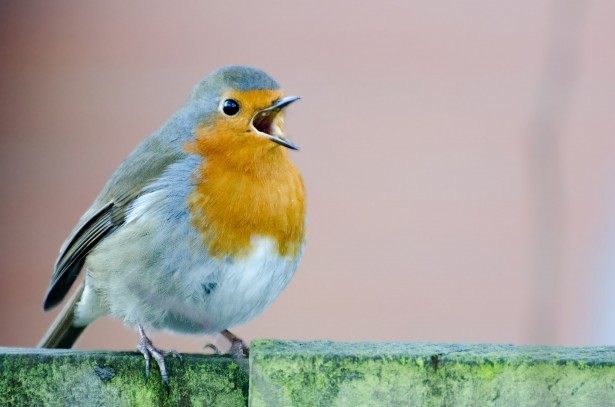Today I want to share with you some of WAN’s reflections on the animal protection movement, which were recently discussed with our International Policy Forum. This is a subject that is often considered and debated internally; and we would love to hear your thoughts and ideas on it as well!
Studying Other Social Change Movements
 WAN studied other social change movements when developing the Strategic Advocacy course. The Strategic Advocacy Course, and all of WAN’s programs, are based on best practice (or, rather, “best available practice”). “Social Change and Social Change Movements” is the subject of the first Module of our course because the animal protection movement can learn valuable lessons by studying other successful movements as well as social change theories and models.
WAN studied other social change movements when developing the Strategic Advocacy course. The Strategic Advocacy Course, and all of WAN’s programs, are based on best practice (or, rather, “best available practice”). “Social Change and Social Change Movements” is the subject of the first Module of our course because the animal protection movement can learn valuable lessons by studying other successful movements as well as social change theories and models.
For a recent strategic review, this analysis was updated and the most relevant Key Success Factors of these movements were identified. Take a look, and consider some of the questions included to stimulate consideration!
Gaps in the Animal Protection Movement
These key success factors were considered alongside new comparative studies, and an analysis of the Gaps in the Animal Protection Movement was prepared. The analysis focuses on public policy because it brings new and unparalleled opportunities and is central to lasting change. Another reason policy is the focal point of the analysis is because our movement has traditionally been largely focused on practical projects and has recently developed some excellent campaigns focused on business and financial institutions.
This analysis was prepared as a backdrop to consideration of the current work of animal protection organizations. Initially, this was purely for internal purposes—to consider WAN’s most effective niche within the movement. However, this analysis is useful for the wider movement as well, and we hope that it will form a useful backdrop to collaborative consideration and debate on what more we can do as a movement to achieve our collective mission. All too often strategies and plans are formulated without wider movement analysis, and while this may help to build organizations, it is likely to fall short of achieving wider movement goals.
Findings
The gaps found are largely self-explanatory, but here are a few of the most notable:
An international federation or alliance
It is impossible to forge a concerted worldwide movement without an international federation/alliance or, at the very least, an international coordination body.
International movement building
It is important to develop movement organization, leadership development and education.
International policy advocacy
There are many important areas of animal welfare policy which are not covered by concerted animal protection advocacy, including Animal Welfare and Development, and areas of United Nations work.
Regional advocacy alliances
There is still a long ways to go to develop effective regional advocacy alliances to be able to effectively influence important regional policy forums, and support implementation of Regional Animal Welfare Strategies (RAWS).
National federations/alliances
There are still many countries without a national federation or alliance to help member organizations to agree on national priorities and effective advocacy strategies; and to reach common positions on issues, so they can speak with one strong voice to their government and legislators.
International Policy Forum Discussion
The Success Factors and Gaps in the Movement papers were discussed at the last meeting of the International Policy Forum on 20th March 2017. Interestingly, there were different views expressed about the gaps mentioned, and the priorities for the movement.
Some IPF members felt that it was easier to unite around an issue because this would sit more neatly with an organization’s day-to-day work and priorities, and because coalitions are always easier to manage if they have a more tangible focus. Others felt that with the way the regional and international policy environment has changed, although issue-based coalitions are desirable, they are no longer sufficient.
There was general agreement that regional alliances were important, especially now that there are Regional Animal Welfare Strategies covering nearly every region of the world (the last region to develop a RAWS, Africa, is reaching the final stages of approval). The example of the European Union was given as an indication of what can be achieved with effective collaborative advocacy. However, while there are some regional alliances outside Europe, these do not yet appear to be sufficiently developed to carry out concerted regional advocacy, support regional implementation or take advantage of the policy advances that are happening across the world or regionally. Nevertheless, there are opportunities to develop existing collaborations to meet this need.
National federations/alliances are also becoming more important, as international and regional policy advances cause more governments across the world to update their animal welfare policy systems and legislation.
The work of the Pan African Animal Welfare Alliance (PAAWA) and the Federation of Indian Animal Protection Organizations (FIAPO) was discussed as examples of regional and national collaborations. PAAWA’s work had stalled when it fell short on funding, and it is now being revitalized with support from Humane Society International (HSI). HSI also supported FIAPO in its development. FIAPO is now building a strong federation, and carrying out successful movement building work. Both organizations pointed out that funding and support were vital to their development. Clearly, more time and funding would be needed for the development of a strong network of regional and national alliances.
The need to draw important strands of this work together at international level was also discussed, including: maintaining an international policy overview, helping to guard against unnecessary duplication, catalyzing collaboration where possible, and, as regional alliances develop, providing a wider umbrella for regions to share information and experiences among their peers. To form an international movement, common themes and actions need to be woven through the work of regions and countries. This would not need a massive structure or budget, providing there is plenty of prioritization, organization, commitment... and able use of modern technology!
WAN is ready and willing to support the movement’s efforts to fill these gaps wherever possible. To this end, we are interested in the thoughts and ideas of others as to how we can collectively develop this work. If this analysis sparks ideas, questions, concerns that you would like to discuss—we are listening! Feel free to leave your comments below, or contact us by email.

